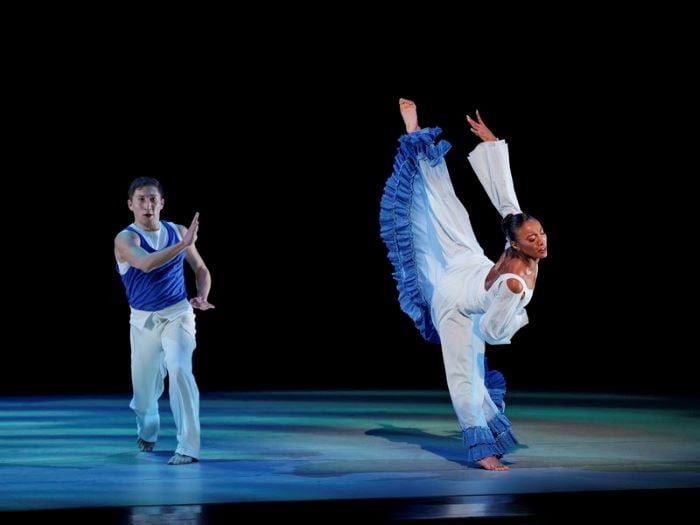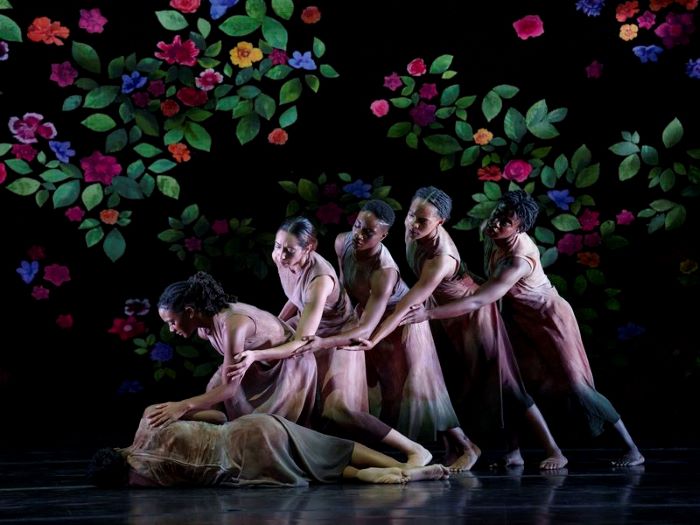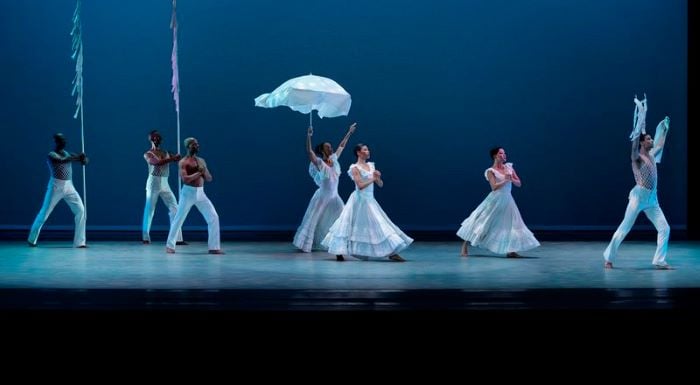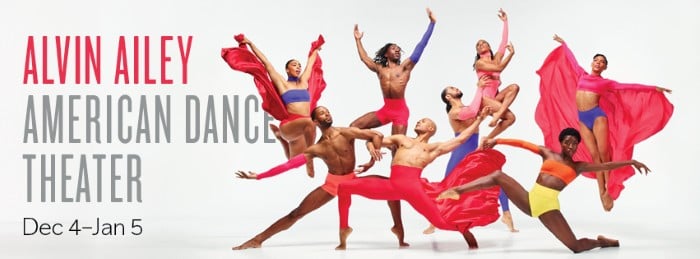For Alvin Ailey American Dance Theater’s 2024-25 season Legacy in Motion and their annual residency at New York City Center, the company, founded in 1958 by the eponymous dancer/choreographer to uplift the African American experience while preserving the legacy of modern dance, celebrates the life of the late Artistic Director Emerita Judith Jamison, who passed away last month, with works by choreographers for whom Ailey and Jamison paved the way. The 39 performances at NYCC, running through January 5, feature a rotating program of eighteen dance pieces, with selections of world premieres, new productions, returning favorites, Ailey classics, and his signature masterpiece, in different combinations, performed with live music on select dates.

On the night I attended (December 11), the troupe of astonishingly skilled and expressive dancers opened the three-part show with Ronald K. Brown’s Dancing Spirit, a beautiful homage to Jamison’s immeasurable talent and influence, named after her 1993 autobiography, choreographed to the music of Duke Ellington, Wynton Marsalis, Radiohead, and War, and employing movement from the US, Cuba, and Brazil to embody her style and soul.
First presented in 2009, the new 2023 30-minute production, performed by a cast of nine and led by the extraordinary Hannah Richardson, ranged from balletic and elegant to athletic and strong, ethereal and graceful to earthy and energetic, with the recurrent motif of uplifted arms and a final image of the full moon on the background projection screen, suggestive of Jamison’s eternal heavenly presence. The symbolism of the titular dancing spirit, made even more resonant by her recent death, was further enhanced by Clifton Taylor’s evocative lighting and Omotayo Wunmi Olaiya’s blue and white costumes – the colors of the sky and clouds – with fabric dyeing by Shayee Awoyom.

Act II brought a dramatic change in tone for the new 2023 production of the 2019 Ode, with choreography and costume design by former Ailey dancer and first resident choreographer Jamar Roberts, a jazz score by Don Pullen – “Suite (Sweet) Malcolm (Part 1 Memories and Gunshots)” – and performed here by an all-female cast. The music, played on solo piano, builds repeatedly to a loud pounding dissonant cacophony, replicating the discordance of our culture in a period of growing gun violence.
As one dancer lies unmoving on the stage, the others enter, she rises up, and they embrace a sense of friendship and community, in what is self-described as “a meditation on the beauty and fragility of life.” The music and movement shift back and forth in the fifteen-minute piece from tender and harmonious to startlingly harsh, staccato, and reactive, until the woman returns to her initial immobile position, and her now gently balletic synchronized friends gather above and mourn the victim, in a profoundly affecting and indelible finale. It all takes place before a backdrop of brightly colored flowers on black fabric (scenic design by Libby Stadstad, with emotive lighting by Brandon Stirling Baker), calling to mind both the flourishing of life and funereal offerings for the dead.

The show closed with Ailey’s famed masterwork Revelations, created in 1960, when the artist was 29 years old, and seen by more people around the globe than any other modern dance piece. Set to the music of traditional African American spirituals – which he described as “songs of trouble, love, and deliverance” – the three-part half-hour suite pays tribute to Ailey’s cultural heritage, based on personal “blood memories” from his childhood, attending Mount Olive Baptist Church in his native Rogers, Texas, hearing the gospel songs, and envisioning them. Those include such rousing numbers as “I Been ’Buked,” “Wade in the Water, and “Rocka My Soul in the Bosom of Abraham,” brought to life by a fervent cast of nine women and nine men, and staged with mood-setting lighting (by Nicola Cernovitch) and aptly-colored period-style costumes and props (designed by Ves Harper), such as the iconic white parasol to block the baking sun of the South, seen behind the dancers on the large projection screen.
Throughout the three segments – “Pilgrim of Sorrow,” “Take Me to the Water,” and “Move, Members, Move” – Ailey’s choreography, chosen songs, and compelling dancers tell the story of Black history in America, tracing the journey from the sorrow of slavery and working the fields, backs bent towards the ground and arms in constant motion, to the uplifting salvation of the Christian church as the people undergo the rite of baptism, to the jubilant holy community of women and men who have triumphed through faith and hope. It’s all readily legible in their eloquent movements and demeanors, physical and emotional mastery, and meaningful signature motion of raising their arms to the glory above, fueling the audience’s cheers, claps, and transcendent joy, in a show that truly is a revelation and a fitting honor to the extraordinary legacy of Ailey and Jamison.
Running Time: Approximately one hour and 50 minutes, including two 20-minute intermissions.

Legacy in Motion plays through Sunday, January 5, 2025, at Alvin Ailey American Dance Theater, performing at New York City Center, 131 West 46th Street, NYC. For tickets (priced at $42-172, including fees), go online.



